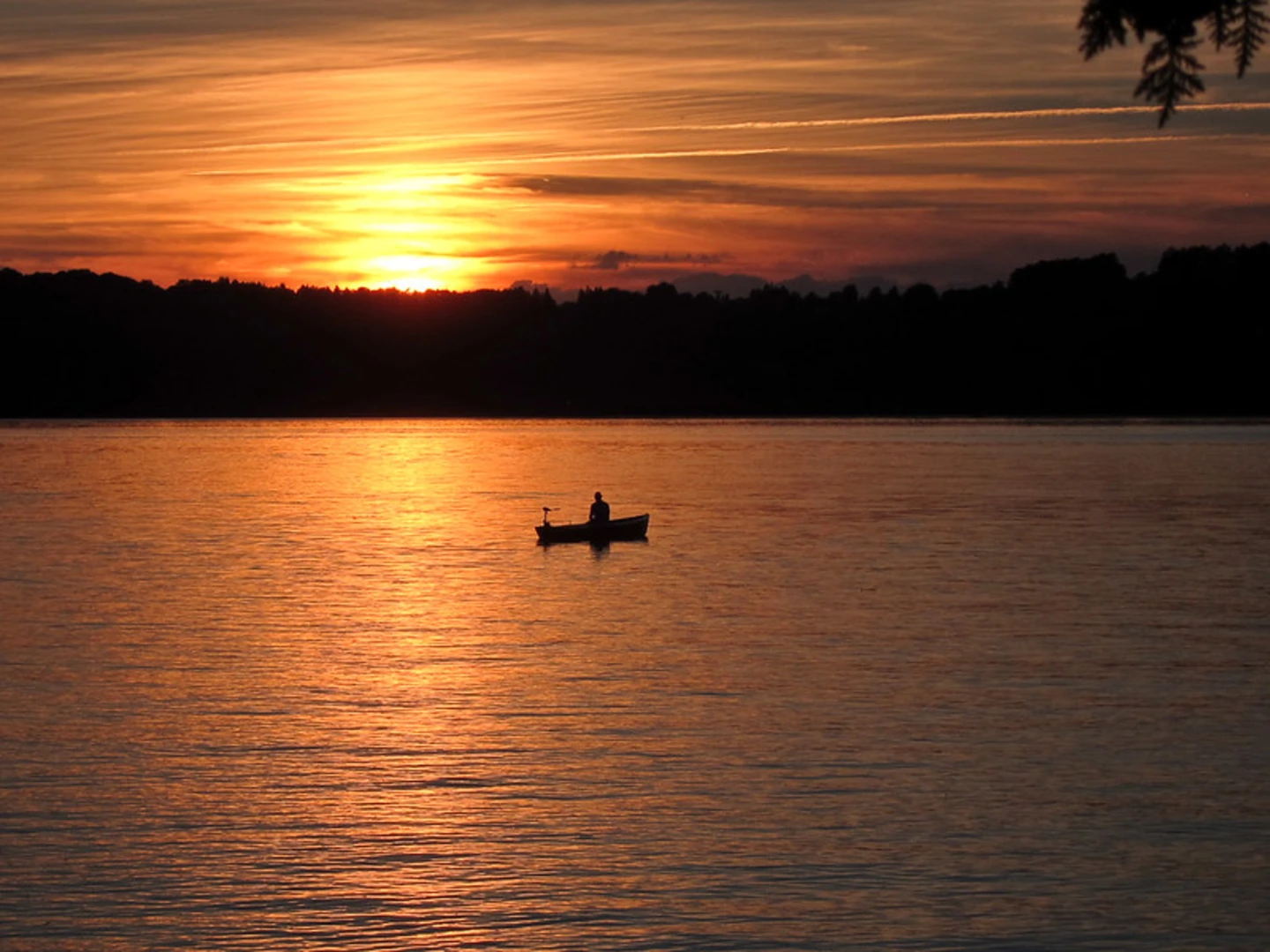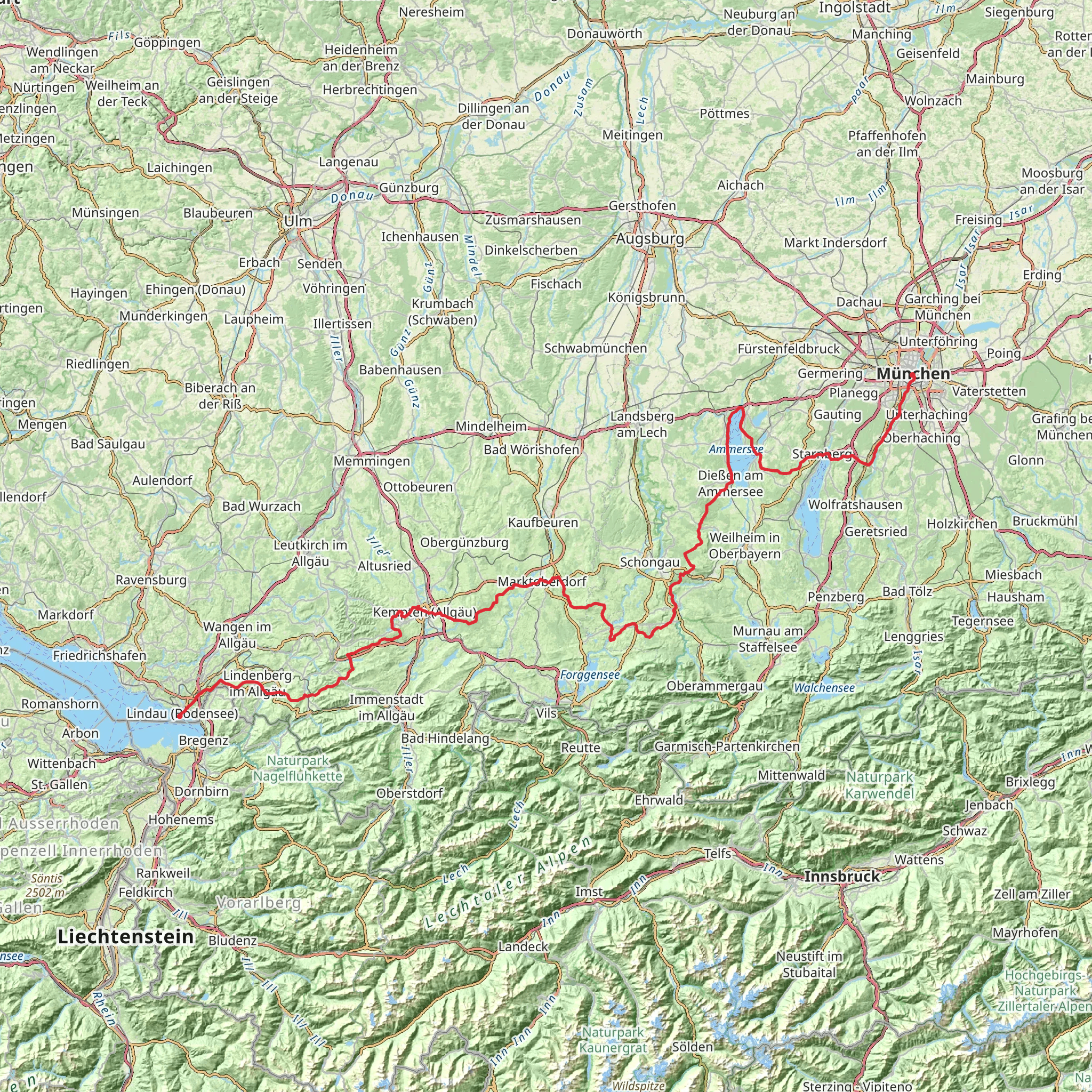Download
Preview
Add to list
More
292.2 km
~15 days
3666 m
Multi-Day
“Embark on the Münchner Jakobsweg, a journey blending Bavarian beauty with historical pilgrimage and moderate hiking challenge.”
The Münchner Jakobsweg is a historic pilgrimage route that begins near the bustling city of Munich, Germany, and stretches approximately 292 kilometers (about 181 miles) to the Austrian border. With an elevation gain of around 3600 meters (nearly 11,811 feet), the trail offers a medium difficulty level, making it accessible to hikers with a moderate level of experience.
Getting to the Trailhead
To start your journey on the Münchner Jakobsweg, you can easily reach the trailhead by public transport or car. If you're coming from Munich, you can take the S-Bahn (suburban train) to Starnberg, which is a town near the official starting point of the trail. From Starnberg, you can begin your hike, or if you prefer to start exactly at the trailhead, you can take a short taxi ride to the Pilgrimage Church of St. Jakob, which is a significant landmark marking the beginning of the route.
Route Overview
As you embark on the Münchner Jakobsweg, you'll traverse a variety of landscapes, including lush forests, rolling hills, and picturesque villages. The trail is well-marked with the iconic scallop shell symbol and the blue and yellow European long-distance path signage, which makes navigation straightforward. For additional support, hikers can use the HiiKER app to access detailed maps and trail information.
Historical Significance and Landmarks
The Münchner Jakobsweg is part of the larger network of Camino de Santiago pilgrimage routes, which have been traveled by pilgrims for centuries. Along the way, you'll encounter numerous chapels, churches, and monasteries that hold historical significance. Notable landmarks include the Andechs Monastery, a Benedictine abbey known for its brewery and the Rottenbuch Abbey, an example of Bavarian Baroque architecture.
Natural Beauty and Wildlife
The trail offers an opportunity to immerse yourself in the natural beauty of the Bavarian countryside. You'll pass through the Ammergau Alps, where you can witness stunning mountain vistas and potentially spot local wildlife such as deer, foxes, and a variety of bird species. The route also takes you through the Pfaffenwinkel region, an area renowned for its idyllic landscapes and rich biodiversity.
Preparation and Planning
Before setting out, it's important to prepare adequately for the journey. Ensure you have suitable hiking gear, including sturdy boots, weather-appropriate clothing, and a reliable navigation tool like the HiiKER app. Plan your accommodations in advance, as the trail passes through small towns where lodging can be limited, especially during peak seasons.
Weather and Climate
The best time to hike the Münchner Jakobsweg is from late spring to early fall when the weather is mild and the days are longer. Be prepared for changeable weather conditions, as the trail can experience everything from warm sunshine to rain and cooler temperatures, especially in the higher elevations.
Cultural Experiences
Embrace the local culture by sampling regional cuisine at inns and restaurants along the route. Bavarian specialties such as pretzels, Weisswurst (white sausage), and local cheeses are not to be missed. Additionally, engaging with locals and fellow hikers can enrich your experience, providing insights into the traditions and customs of the region.
By following this trail, you'll not only enjoy the physical challenge and natural splendor but also partake in a journey steeped in history and cultural heritage. Whether you're seeking spiritual reflection or simply a unique adventure, the Münchner Jakobsweg offers a memorable experience for every hiker.
Comments and Reviews
User comments, reviews and discussions about the Münchner Jakobsweg, Germany.
4.5
average rating out of 5
2 rating(s)

